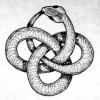continuing with some data on BMI1, heart, SASP and the skin, the mitochondria, with another aspect of aging: the mitochondrial DNA deletions.
A recent paper about a finding: BMI1 inhibits heart senescence too, and the accompanying SASP, and suggests it as a source for cardiac rejuvenation:
Bmi1 limits dilated cardiomyopathy and heart failure by inhibiting cardiac senescence
Gonzalez-Valdes et al. 2015
http://www.ncbi.nlm....pubmed/25751743
Abstract
Dilated cardiomyopathy (DCM) is the most frequent cause of heart failure and the leading indication for heart transplantation. Here we show that epigenetic regulator and central transcriptional instructor in adult stem cells, Bmi1, protects against DCM by repressing cardiac senescence. Cardiac-specific Bmi1 deletion induces the development of DCM, which progresses to lung congestion and heart failure. In contrast, Bmi1 overexpression in the heart protects from hypertrophic stimuli. Transcriptome analysis of mouse and human DCM samples indicates that p16(INK4a) derepression, accompanied by a senescence-associated secretory phenotype (SASP), is linked to severely impaired ventricular dimensions and contractility. Genetic reduction of p16(INK4a) levels reverses the pathology of Bmi1-deficient hearts. In parabiosis assays, the paracrine senescence response underlying the DCM phenotype does not transmit to healthy mice. As senescence is implicated in tissue repair and the loss of regenerative potential in aging tissues, these findings suggest a source for cardiac rejuvenation.
About the mitochondria and mtDNA:
Identification of mitochondrial dysfunction in Hutchinson-Gilford progeria syndrome through use of stable isotope labeling with amino acids in cell culture
Rivera-Torres et al. 2013
http://www.ncbi.nlm....pubmed/23969228
about the regulation of the function of the mitochondria and the actin:
Serum Response Factor (SRF)-cofilin-actin signaling axis modulates mitochondrial dynamics
Beck et al. 2012
http://www.ncbi.nlm....pubmed/22927399
http://www.pnas.org/...9/38/E2523.full
Lamin A/C and emerin regulate MKL1-SRF activity by modulating actin dynamics
Ho et al., Nature. 2013 May 23
http://www.ncbi.nlm....pubmed/23644458
PMC3666313
Earlier I presented this paper about fibroblasts and skin aging, and some dysfunctions in this process:
from the post #25:
... the "normal" aging of the skin, cf.:
...Looking older: fibroblast collapse and therapeutic implications
Fisher, Varani, Voorhees, 2008
http://www.ncbi.nlm....pubmed/18490597
Abstract
Skin appearance is a primary indicator of age. During the last decade, substantial progress has been made toward understanding underlying mechanisms of human skin aging. This understanding provides the basis for current use and new development of antiaging treatments. Our objective is to review present state-of-the-art knowledge pertaining to mechanisms involved in skin aging, with specific focus on the dermal collagen matrix. A major feature of aged skin is fragmentation of the dermal collagen matrix. Fragmentation results from actions of specific enzymes (matrix metalloproteinases) and impairs the structural integrity of the dermis. Fibroblasts that produce and organize the collagen matrix cannot attach to fragmented collagen. Loss of attachment prevents fibroblasts from receiving mechanical information from their support, and they collapse. Stretch is critical for normal balanced production of collagen and collagen-degrading enzymes. In aged skin, collapsed fibroblasts produce low levels of collagen and high levels of collagen-degrading enzymes. This imbalance advances the aging process in a self-perpetuating, never-ending deleterious cycle. Clinically proven antiaging treatments such as topical retinoic acid, carbon dioxide laser resurfacing, and intradermal injection of cross-linked hyaluronic acid stimulate production of new, undamaged collagen. Attachment of fibroblasts to this new collagen allows stretch, which in turn balances collagen production and degradation and thereby slows the aging process. Collagen fragmentation is responsible for loss of structural integrity and impairment of fibroblast function in aged human skin. Treatments that stimulate production of new, nonfragmented collagen should provide substantial improvement to the appearance and health of aged skin.
Here is a subsequent one about the possible anti-aging effect of the corrections of
the mentioned dysfunctions, from the same group, in collaboration with another group:
Enhancing Structural Support of the Dermal Microenvironment Activates Fibroblasts, Endothelial Cells, and Keratinocytes in Aged Human Skin In Vivo
Taihao Quan1,2, Frank Wang1,2, Yuan Shao1, Laure Rittié1, Wei Xia1, Jeffrey S Orringer1, John J Voorhees1 and Gary J Fisher1
Journal of Investigative Dermatology (2013) 133,658–667; doi:10.1038/jid.2012.364; published online 25 October 2012
http://www.ncbi.nlm....pubmed/23096713
Abstract
The dermal extracellular matrix (ECM) provides strength and resiliency to skin. The ECM consists mostly of type I collagen fibrils, which are produced by fibroblasts. Binding of fibroblasts to collagen fibrils generates mechanical forces, which regulate cellular morphology and function. With aging, collagen fragmentation reduces fibroblast-ECM binding and mechanical forces, resulting in fibroblast shrinkage and reduced function, including collagen production. Here, we report that these age-related alterations are largely reversed by enhancing the structural support of the ECM. Injection of dermal filler, cross-linked hyaluronic acid, into the skin of individuals over 70 years of age stimulates fibroblasts to produce type I collagen. This stimulation is associated with localized increase in mechanical forces, indicated by fibroblast elongation/spreading, and mediated by upregulation of type II TGF-ß receptor and connective tissue growth factor. Interestingly, enhanced mechanical support of the ECM also stimulates fibroblast proliferation, expands vasculature, and increases epidermal thickness. Consistent with our observations in human skin, injection of filler into dermal equivalent cultures causes elongation of fibroblasts, coupled with type I collagen synthesis, which is dependent on the TGF-ß signaling pathway. Thus, fibroblasts in aged human skin retain their capacity for functional activation, which is restored by enhancing structural support of the ECM.
And another fresh result from the above collaborative group examining the problem of mitochondria and the actin in the skin.
Age-associated reduction of cell spreading induces mitochondrial DNA common deletion by oxidative stress in human skin dermal fibroblasts: implication for human skin connective tissue aging
Quan C1, Cho MK2, Perry D3, Quan T4.
J Biomed Sci. 2015 Jul 28;22(1):62. doi: 10.1186/s12929-015-0167-6.
http://www.ncbi.nlm....pubmed/26215577
Abstract
BACKGROUND:
Reduced cell spreading is a prominent feature of aged dermal fibroblasts in human skin in vivo. Mitochondrial DNA (mtDNA) common deletion has been reported to play a role in the human aging process, however the relationship between age-related reduced cell spreading and mtDNA common deletion has not yet been reported.
RESULTS:
To examine mtDNA common deletion in the dermis of aged human skin, the epidermis was removed from full-thickness human skin samples using cryostat. mtDNA common deletion was significantly elevated in the dermis of both naturally aged and photoaged human skin in vivo. To examine the relationship between age-related reduced cell spreading and mtDNA common deletion, we modulated the shape of dermal fibroblasts by disrupting the actin cytoskeleton. Reduced cell spreading was associated with a higher level of mtDNA common deletion and was also accompanied by elevated levels of endogenous reactive oxygen species (ROS). Boosting cellular antioxidant capacity by using antioxidants was found to be protective against mtDNA common deletion associated with reduced cell spreading.
CONCLUSION:
mtDNA common deletion is highly prevalent in the dermis of both naturally aged and photoaged human skin in vivo. mtDNA common deletion in response to reduced cell spreading is mediated, at least in part, by elevated oxidative stress in human dermal fibroblasts. These data extend current understanding of the mitochondrial theory of aging by identifying the connection between mtDNA common deletion and age-related reduction of cell spreading.
A comment about this paper from the BioscienceNews/fightaging blog:
http://www.longecity...-dna-deletions/















































